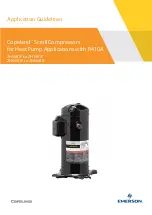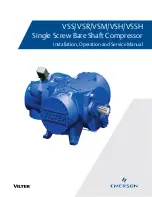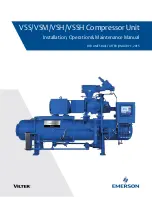
Nuvair Open Electric Models
Nuvair Page 9
www.Nuvair.com
1.7
Where the Compressor may be used
This high pressure compressor
has been designed and built for the purpose of producing
breathing air by drawing it from the surrounding environment. The surrounding environment air
must be free from any harmful fumes or contaminates. The air is passed through an intake air
filter, compressed and run through breathing air filtration before it is stored in bottles constructed
to contain air at high pressure.
The compressor must only be used in environments having the
characteristics described in the following table.
Area of Machine Use: Essential Data Table
Temperature ambient
Min. +41°F - Max. +113°F (Min. +5°C - Max. +45°C)
Air humidity
(%) Maximum 80%
rain
Tolerated Weather Conditions
hail none
snow
Max tilt angle (bank)
(%) 6%
Check that the area in which the compressor is to be positioned is adequately ventilated: good air
exchange (more than one window) with no dust and no risk of explosion, corrosion or fire. If
ambient temperatures exceed 113°F (45°C) air conditioning will be required. Make sure that
lighting in the area is sufficient to identify every detail (such as the writing on the info
plates/stickers); use artificial lighting where daylight on its own is insufficient.
•
When Pumping Nitrox, Ambient temperature Maximum is 100°F and Maximum fill pressure
is 3600 psi.
1.8
Running and Testing the Compressor
Each compressor is carefully ran and tested prior to delivery. A new compressor must
nevertheless be used with caution during the first 5 working hours so as to complete proper
breaking in of its components. If the compressor is subject to an excessive workload during initial
use, its potential efficiency will be prematurely compromised and functionality soon reduced.
During the breaking in period proceed as follows:
•
After starting the unit, let the compressor run un-loaded for 5-6 minutes.
After the first 25 hours carry out in addition to the scheduled maintenance the following tasks:
•
Change the compressor oil
•
Change the oil filter
•
Check and adjust nuts and bolts
When changing the oil filter, inspect the filter element and check for any deposits. If metal or
carbon deposits are present, locate the source before restarting the compressor.











































